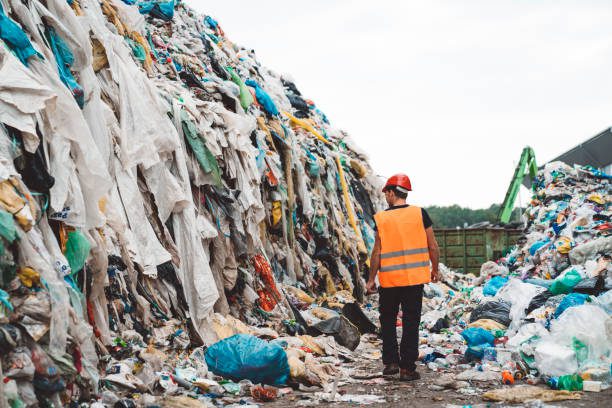
The fast fashion industry is known for its high turnover of trendy clothing at low prices, but the environmental impact of this industry is becoming increasingly concerning. The production of fast fashion involves the use of large quantities of natural resources, such as water, energy, and raw materials. This results in high levels of pollution and greenhouse gas emissions.
One of the main issues with fast fashion is that it promotes a culture of disposable fashion. Garments are often made with low-quality materials that are not designed to last, leading to a high turnover of clothing and a significant amount of waste. The textile industry is also one of the largest contributors to water pollution, releasing toxic chemicals into waterways during the dyeing and finishing processes.
Additionally, the fast fashion industry creates a significant amount of waste. With the rise of online shopping and the constant push for new trends, many consumers are quick to discard clothing that is still in good condition. According to the Environmental Protection Agency, the average American throws away around 80 pounds of clothing per year, contributing to the growing problem of textile waste in landfills.
The need for change in the fast fashion industry is clear. Companies must adopt more sustainable practices, such as using organic and recycled materials, implementing energy-efficient manufacturing processes, and promoting responsible consumption. Consumers can also play a role in reducing the environmental impact of fast fashion by buying fewer, higher-quality items, supporting ethical and sustainable brands, and actively participating in clothing swaps or secondhand shopping.
It is crucial for both the industry and consumers to recognize the environmental consequences of fast fashion and take action to mitigate its impact. Through collective efforts, we can work towards a more sustainable and eco-friendly clothing industry that minimizes waste and promotes the long-term health of our planet.
The Impact of Fast Fashion
Understanding the environmental costs and sustainable solutions.
What is Fast Fashion?
Fast fashion is a business model focused on rapidly producing inexpensive clothing to keep up with ever-changing trends. Unlike traditional fashion cycles that changed seasonally, fast fashion pushes new styles constantly, leading to increased consumption and disposal.
Environmental Impact
Water Pollution & Consumption
- The textile industry is responsible for 20% of global wastewater, making it the second most water-polluting industry.
- An estimated 200 tons of water are needed per ton of yarn during manufacturing and dyeing processes.
- Cotton is a water-intensive crop, requiring approximately 5,283 gallons of water to yield 2.2 lbs (enough for one t-shirt).
- Drought conditions severely impact cotton farming, leading to reduced crops.
- Toxic dyes release chemicals into groundwater, harming aquatic life and ecosystems.
Waste & Landfills
- Mass-produced and frequently discarded clothing significantly contributes to materials ending up in landfills.
- Polyester, derived from plastic and fossil fuels, poses a major problem if it’s discarded and ends up in landfills.
- Lack of access to donation and recycling bins, especially in underserved communities, exacerbates the issue.
Climate Impact Breakdown
The climate impact of clothing production comes from various stages (based on the provided chart):
- Fabric production: 42% (largest contributor)
- Fibre production: 17%
- Garment production: 11%
- Consumer transportation: 23%
- Distribution & Retail: 4%
- Laundry: 3%
- End of life: 0% (indicating its impact is accounted for elsewhere or considered negligible in this specific breakdown)
Towards Sustainable Solutions
Textile Recycling Innovation
- Innovative companies like Circ are using disruptive technology to recycle blended fabrics into near-virgin equivalents.
- Evrnu is transforming old threads into new sustainable fibers through repolymerization.
- Synthetic fibers like nylon and polyester can be returned to their primary state without losing quality.
Sustainable Dyes & Materials
- Research and development into environmentally friendly dyes are crucial to reduce water contamination.
- Increasing the utilization of fabric made from recycled clothing can eliminate the need for redyeing.
Reuse & Donation
- Donating and reusing old clothing and fabrics extends their lifespan and reduces waste.
- Supporting brands that prioritize sustainable practices and offer repair/reuse programs.
Embracing Sustainable Fashion Through Creativity and Innovation
As we conclude our exploration into sustainable fashion, it is evident that embracing sustainability through creativity and innovation is not only necessary but also incredibly beneficial. Throughout this discussion, we have delved into the various aspects of sustainable fashion, highlighting the environmental, social, and economic advantages of this approach.
The growing awareness of the negative impact of the fashion industry on the environment and the labor force has prompted the need for change. Embracing sustainable fashion allows us to minimize the carbon footprint and waste generated by the industry, while also addressing social issues such as labor exploitation. By prioritizing ethical production practices and utilizing eco-friendly materials, we can contribute to a more harmonious and just society.
However, the implementation of sustainable practices requires creativity and innovation. We must challenge the conventional methods of manufacturing and design and seek alternative solutions that prioritize sustainability. This can include utilizing upcycled or recycled materials, implementing innovative manufacturing processes, and fostering collaborations that promote sustainable practices.
In addition to the environmental and social benefits, embracing sustainable fashion also presents immense economic opportunities. The demand for sustainable products is on the rise, and consumers are becoming more conscious of their purchasing choices. By embracing sustainability, businesses can tap into this growing market and establish themselves as pioneers in the industry. Furthermore, by optimizing resource management and minimizing waste, companies can achieve cost savings and improve their bottom line.
In conclusion, the future of the fashion industry lies in the hands of those who embrace sustainability through creativity and innovation. By prioritizing ethical and eco-friendly practices, we can redefine the landscape of fashion and establish a more sustainable and ethical industry. It is our collective responsibility to embrace this change and work towards a future where fashion and sustainability go hand-in-hand.
